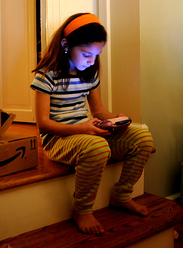Digital Media, Literacy Instruction And The Linchpin: Well-Trained Teachers
Blog Post
March 24, 2009

The article, "TV Guidance," was written by James Paul Gee, a literacy professor at Arizona State University and Michael Levine, executive director of the Joan Ganz Cooney Center at Sesame Workshop and a senior associate at Yale University's Zigler Center. They write:
"Current literacy practices and policies have cost tens of billions of dollars over the past decade with almost no integration of the new digital tools and teaching practices that have the potential to build the skills and knowledge demanded by universities and employers in the twenty-first century."
Meanwhile, they point out, digital media -- whether TV shows, games, Web sites or social and virtual-world networks -- have become mainstays in the lives of children on afternoons, evening and weekends. Some might see that as a reason to curtail electronic media's use in classrooms. But Gee and Levine argue that elementary school teachers are missing out on a chance to expose students, using technology that clearly engages them, to new vocabularies, new realms for scientific or cultural discovery and new landscapes of rich academic content.
Gee and Levine say this pivot must include "well-trained and committed adult guidance and instruction." We agree. In fact, it cannot be stressed enough: Gains in literacy skills will only emerge when well-qualified teachers, mentors and other adults are considered the key component of instruction. In short, no matter how smart and engaging digital media can be, well-trained and inspiring teachers matter most. Digital tools and games, Gee and Levine write, "can only be useful if parents, teachers, and more advanced peers help children seek out good learning media and fruitfully draw on their internal design features for learning."
What's more, if left to fend for themselves, children risk facing an ever-broadening landscape of media content without the literacy skills to do any in-depth reading and critical thinking about what they are seeing.
Teachers need, and many of the latest generation of teachers desperately want, better training on how to use digital media in their classrooms and better guidance. They need insights on the types of games or programs that will truly engage their students instead of boring them with automated drills or causing whole classes to get hung up in technical difficulties.
One of Gee and Levine's proposals is to establish a Digital Teacher Corps of 6,000 literacy leaders, two for each of the 3,000 lowest-performing school communities in the United States. It is an intriguing proposal that deserves some thought. We like that it echoes broader arguments for more professional development, ensuring that pre-k and elementary school teachers have access to high-quality workshops, mentors and continuing education opportunities that bring more vibrancy and relevance to today's classrooms.
For more on literacy instruction and electronic media -- for good and ill -- see Gee's research, recent Cooney reports, the New York Times' series last year on "The Future of Reading," and a 2007 report from the National Endowment for the Arts about reading at risk. Also see Q-and-As with two innovative thinkers on education and technology, published by Parents' Choice last summer: Barry Joseph of the Global Kids' Digital Media Initiative, and Nichole Pinkard of the Urban Education Institute at the University of Chicago.
(Flickr photo by Diego Cupolo copied under the Creative Commons license.)